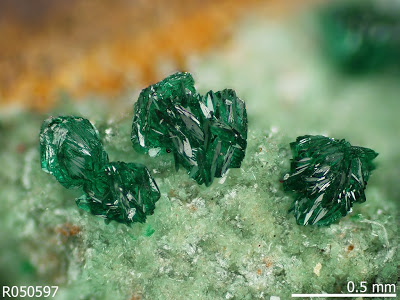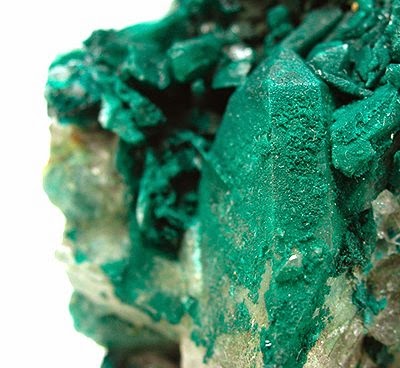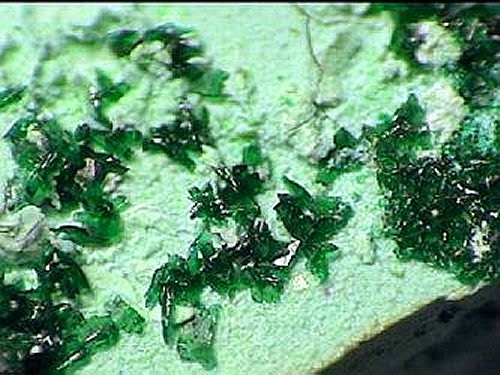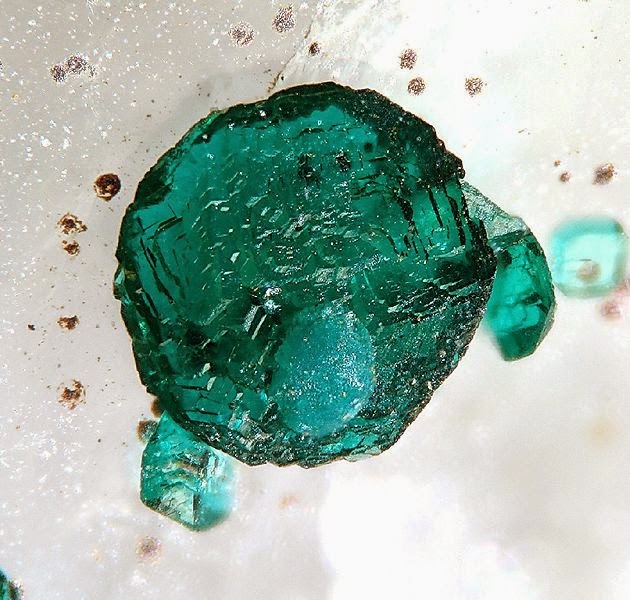
Chemical Formula: Cu5(PO4)2(OH)4
Locality: Virneberg Mine, Rheinbreitbach, Westerwald, Rhineland-Palatinate, Germany.
Name Origin: From the Greek, pseudo – “false” and malachite.
Pseudomalachite is a phosphate of copper with hydroxyl, named from the Greek for “false” and “malachite”, because of its similarity in appearance to the carbonate mineral malachite, Cu2(CO3)(OH)2. Both are green coloured secondary minerals found in oxidised zones of copper deposits, often associated with each other. Pseudomalachite is polymorphous with reichenbachite and ludjibaite. It was discovered in 1813. Prior to 1950 it was thought that dihydrite, lunnite, ehlite, tagilite and prasin were separate mineral species, but Berry analysed specimens labelled with these names from several museums, and found that they were in fact pseudomalachite. The old names are no longer recognised by the IMA.
History
Discovery date: 1813
Etymology:” PSEUDO” = faux” et MALACHITE
Optical properties
Refractive Index: from 1,79 to 1,86
Axial angle 2V : 48°
Physical properties
Hardness: from 4,50 to 5,00
Density : 4,35
Color : green; blackish green; bluish green; pale blue green; black green; blue green
Luster: vitreous; greasy
Streak : green blue; green
Break : splintery; conchoidal
Cleavage : yes
Photos:













